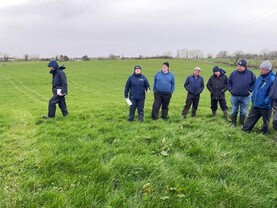While the last fortnight has somewhat put the thoughts of housing for winter to the back of our minds once again, it is still time to plan for the coming winter period.
This can be done on the majority of farms where first- and second-cut silage is in the yard well over six weeks at this stage.
For those who had a third cut of silage or excess grazing baled in the last month to six weeks, it is best not to test this silage just yet.
However, in most cases, the amount of silage made in this recent period will represent a relatively low proportion of the total silage in the yard and therefore testing of the main cuts should still take place.
Why test silage?
Without knowing the quality of the silage in the yard, you are likely to either over- or underestimate the feed value of the crop. Both of these outcomes can be costly.
Overestimating the quality of the silage is probably the most common issue. In this instance, farmers are not supplementing silage with sufficient levels of concentrate to support the desired daily liveweight gains.
Underestimating the silage quality can also be a problem, as you may not need to feed as much concentrate as you might think. This can result in an unnecessary increase in feed costs and cost/kg gain.
A representative sample
Sampling silage is a bit like having to sample the pick and mix at the cinema with a blindfold on.
If you only take a sample from one of the pots (ie a single grab of silage from the first bale opened or first bench of pit silage) it is not going to be representative of all the sweets available – you could be unlucky enough to get a bag full of chocolate covered raisins!
In fact, poorly tested silage is actually worse than having no silage analysis at all, as it can be very misleading.
You need to take multiple samples from multiple pots, from the top shelf to the bottom, to get a decent representation of all the sweets available.
The average of this sample will then reflect the average feed value of the entire available diet.
You need to core a silage pit four or five times from top to bottom, and sample multiple bales from multiple fields in order to have a representative sample and build up a sufficient picture of the average quality.
Only when this is done can winter diets be accurately formulated. Many feed companies are offering silage analysis for free at this stage, so it is a worthwhile exercise to carry out once sampling is correct.






 This is a subscriber-only article
This is a subscriber-only article










SHARING OPTIONS: